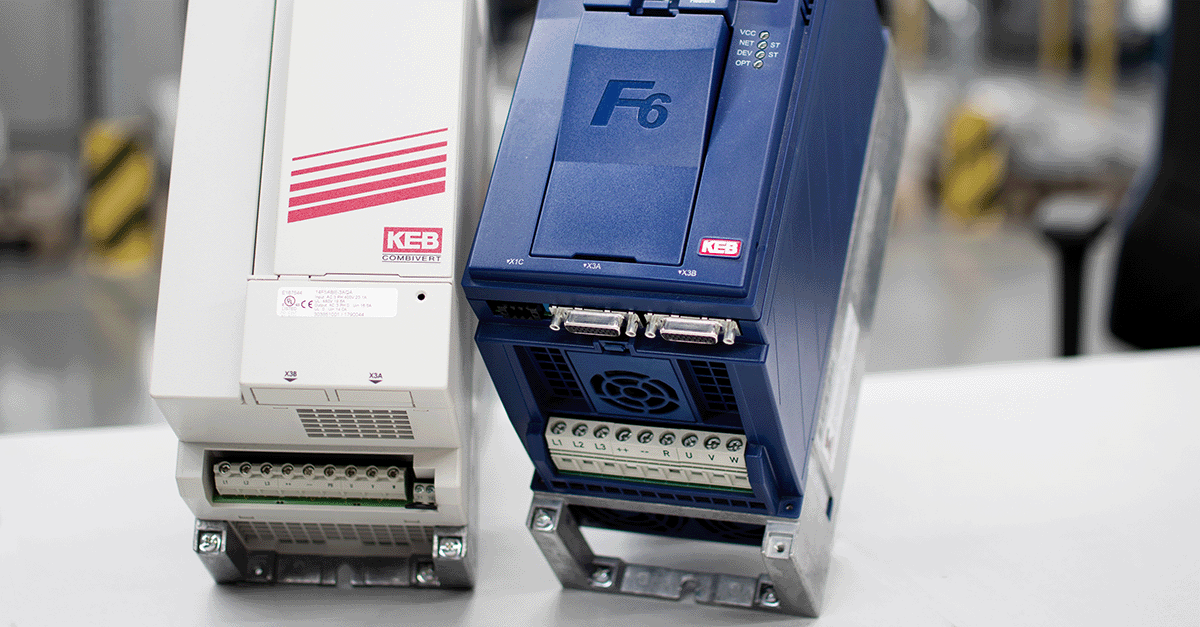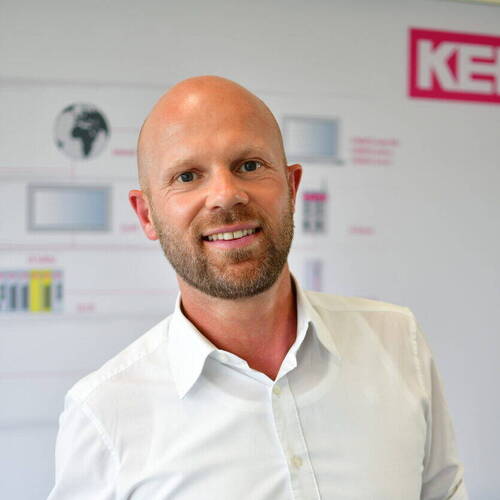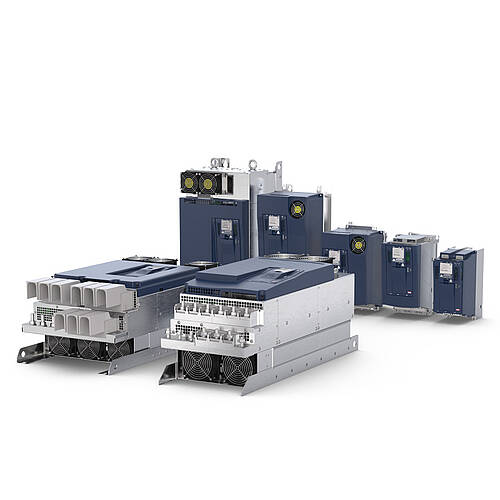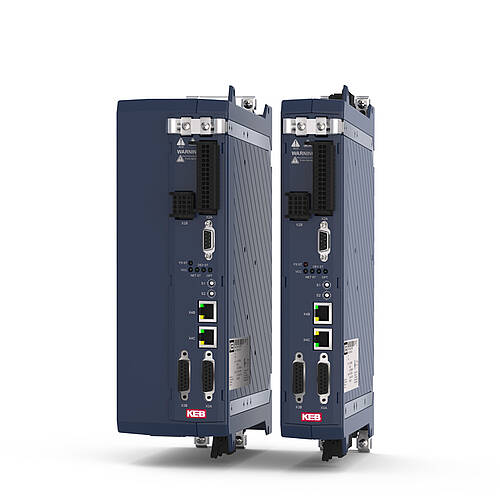- Frequency inverter and servo system for open-loop and closed-loop applications
- Power range from 0.37 kW to 900 kW
- Modular drive technology
When frequency inverters turn into “drive controllers”

Interview on the discontinuation of the COMBIVERT F5 and the chances of the COMBIVERT F6 and S6
After more than 20 years and thousands of equipped applications, the COMBIVERT F5 frequency inverter was transferred to the after-sales area in July 2023 and will no longer be sold. With the COMBIVERT F6 and S6 dignified successors are already on the market, which come up with many new features. Benjamin Mönnig, Head of Application Sales at KEB, explains how exactly "old" and "new" inverters differ and what the retirement of the F5 means for customers.
Why was it time for a new inverter generation?
Benjamin Mönnig: The requirements for our customers' machines and systems are constantly changing - and so are the demands on drive technology. Therefore, the goal was to develop an inverter that offers maximum innovation and flexibility in addition to compact design and higher performance. Another aspect was also that the COMBIVERT F5 series consisted of many separate versions and our customers had to order individual versions of the F5 for a wide variety of applications. With the COMBIVERT F6, we are now taking a particularly economical approach. With it, we have launched a genuine all-rounder on the market that comes with a significantly wider range of features. Finally, the decision to launch a new generation of converters also made sense in order to have all the necessary components available in the long term.
What are the key features that set the F6 and S6 apart from the F5?
The COMBIVERT F6 has a higher power density with more compact dimensions. We have paid particular attention to distinct multifunctionality. This applies, for example, to the bus systems integrated from the outset or the various cooling concepts. The F6 is also a drive that can control all types of motors with or without encoders using just one firmware. The drive controller has two multi-encoder interfaces for evaluating the most common encoders, and interaction with other drives is possible via CAN cross communication. The F6 and S6 also go one step further in terms of sustainability: the drive controllers are recyclable by up to 75 percent and have up to 18 percent less power loss.
While the F5 was still referred to as a classic frequency inverter, the sixth generation devices are called “drive controllers”. Why is that?
With our new generation, the frequency inverters have become “drive controllers”. Whereas frequency inverters in the classic sense are designed to operate asynchronous motors, the F6 is capable of controlling IPM, synchronous reluctance or high-torque motors. In addition, the new drives feature servo characteristics and thus more overload. And in the area of safety technology, a drive controller also goes far beyond the frequency inverter: While STO was on board as standard for the F5, numerous other safety features are also available for the F6 and S6. In the Pro variant, we are talking about encoderless safety technology, FSoE and bus cycle times of 250µ, depending on requirements.
The F5 was part of the KEB portfolio for a long time. What do you personally associate with the inverter?
Over the years, we have regularly equipped exciting and no infrequently challenging applications with the F5 frequency inverter, where you always learned something new. A special characteristic of the F5 was certainly that it was the first inverter to be able to implement the sensorless control methods ASCL (Asynchronous Closed Loop) and SCL (Sensorless Closed Loop) developed by KEB, with which a very high speed and torque accuracy was achieved. To experience such a technological advance in such a direct way was very exciting.

Benjamin Mönnig
Head of Application Sales
What does the discontinuation of the F5 mean for plant and machine builders who still have it in operation?
More and more plant and machine builders are now relying on our sixth-generation drive controllers. And there are good reasons for this. Because the devices were developed in such a way that they fit optimally into KEB's system solutions – from the controller to the motor. Since devices from KEB have a very long service life, F5 inverters are of course still in use. The responsibility for the complete series has now been handed over to our Global Service and will be supported by them until 2029. In addition, the spare parts business is also the responsibility of this department. However, it is no longer possible to order new F5 beyond the service.
The F6 has already been available for a few years. What has the customer feedback been like so far?
We are pleased that the COMBIVERT F6 and the S6 have been very well received by our customers. This positive feedback is also because customer wishes were already significantly incorporated during the development process and that experience we gained with the previous version was taken into account. Particularly worth mentioning is the Multi Real-Time Interface, which means that many bus systems are available right from the start. And the compactness of the devices, which bring about significant space savings in the control cabinet, is also a feature that repeatedly proves to be an advantage in practical use at the customers'.


